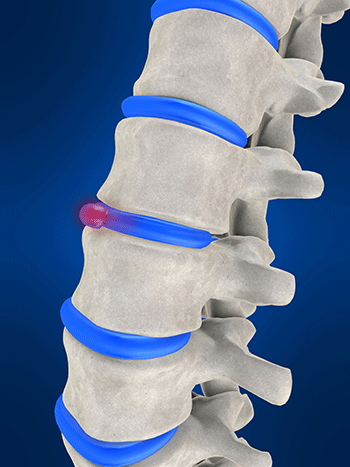 Earlier research has shown that the risk of lumbar disc herniation increases with age, but a new study raises questions about that common assumption. The study suggests that adults over the age of 80 are actually less likely to suffer from lumbar disc herniation compared to their younger peers.
Earlier research has shown that the risk of lumbar disc herniation increases with age, but a new study raises questions about that common assumption. The study suggests that adults over the age of 80 are actually less likely to suffer from lumbar disc herniation compared to their younger peers.
One of the main mechanisms of disc herniation occurs when the soft inside of spinal discs (the nucleus pulposus) pushes outside of its normal space, pressing up against the exterior of the disc (the annulus fibrosus), causing the disc to bulge outward. Eventually the nucleus pulposos herniates (squeezes) outside of annulus , placing direct pressure on spinal nerves and/or the spinal canal. Symptoms of disc herniation include numbness, weakness, and pain in the leg, foot, buttock, and lower back. Since aging causes the annulus to dry out and crack, growing old has been found to increase the risk of lumbar disc herniation.
Researchers from China sought to test those earlier findings by conducting a retrospective analysis of 601 cases of lumbar disc herniation in adults over the age of 65. They discovered:
- Lumbar disc herniation risk decreased with age in the elderly, especially after age 80.
- Elderly females have the biggest reductions in LDH risk.
- Factors such as hypertension, hyperlipidemia, and diabetes were not found to increase LDH risk.
- Adults between the ages of 65-70 had the highest risk of LDH herniation, especially females.
- The most common site for lumbar disc herniation occurred at the bottom of the spine at L4-L5 and/or L5-S1.
The surprising finding led researchers to hypothesize that in elderly adults, aging causes the inside of the disc to shrink and atrophy, reducing the pressure that it places against the exterior ring.
The authors of the study also found that surgery was not the best course of treatment for elderly patients with lumbar disc herniation. “If it is not a case of acute nerve and spinal cord compression, nonoperative treatment will be used with elderly patients of LDH, such as physical therapy and pain medications,” they wrote. Epidural steroid injections are frequently used a non-surgical treatment for lumbar disc herniation, however they have been linked to an increased risk of fractures in the elderly, so seeking non-drug options such as exercise and chiropractic care may be safer. Additionally, earlier research has demonstrated that chiropractic care is effective for degenerative disc disease and herniated discs, without the risks of surgery or drugs.
Reference
Ma D, et al. Trend of the incidence of lumbar disc herniation: decreasing with aging in the elderly. Clinical Intervention Aging 2013; 8: 1047-1050.

